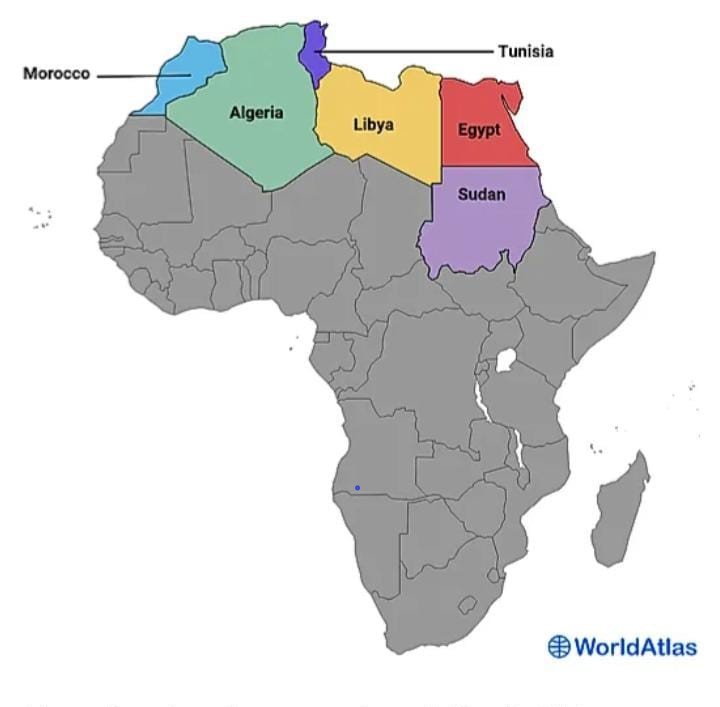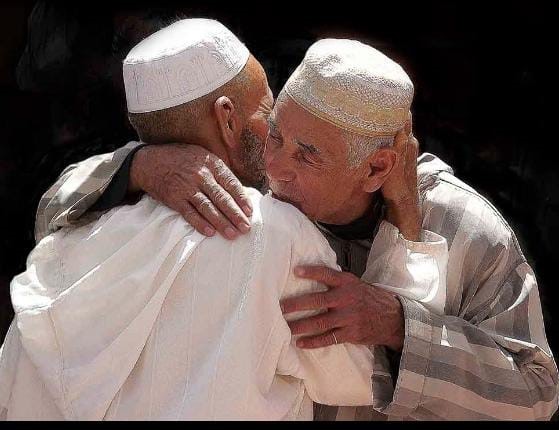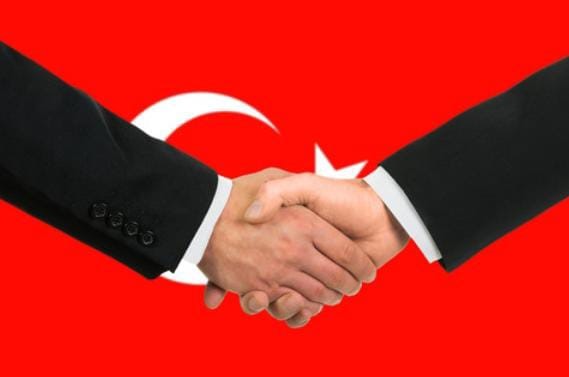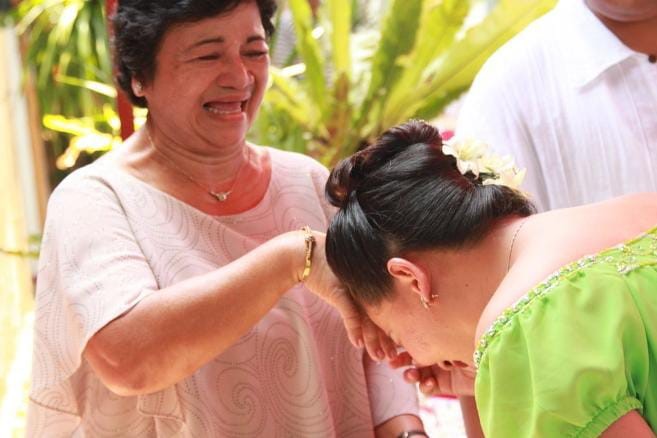North Africa is home to 6 countries with a more than 200 million population.

North Africa’s historical and cultural context is deeply woven with its geography. The vast Sahara Desert covers a massive portion of the region; its coastal areas have been hubs of trade and cultural exchange for centuries. This proximity of arid landscapes and fertile coastal areas has left an indelible mark on the region’s history and traditions, including greetings.
Greetings play a crucial role in North African culture. They also contribute to the rich tapestry of cultural diversity in the region. By understanding the importance of North African greetings, their cultural significance, and how they have changed over time, we can gain a deeper appreciation for the cultural diversity in the region.
Understanding the Importance of Greetings in North African Culture
In North African culture, greetings hold a special place in daily interactions. They serve as a means of establishing and maintaining social connections, showing respect, and expressing goodwill. The act of greeting is deeply rooted in the fabric of society, with specific rules and customs that vary across different countries and communities.
Greetings in North African culture go beyond mere pleasantries. They are seen as a way to acknowledge the presence of others and to create a sense of belonging and unity. When two individuals meet, it is customary for them to exchange greetings, often accompanied by a warm smile and a handshake. This simple act sets the tone for the interaction that follows and helps to establish a positive rapport between individuals.
The Function of Language in North African Greetings
Language is an essential element in North African greetings. Arabic, Amazigh, and other regional dialects convey greetings, ensuring that each community’s cultural and linguistic identity is maintained. The use of language reflects the region’s diversity, highlighting each group’s unique characteristics.
For example, in Morocco, the Arabic greeting “Salam alaykum” is commonly used, while in Algeria, the Berber greeting “Azul” is more common. These linguistic differences not only showcase the rich linguistic heritage of North Africa but also serve as a way for individuals to connect with their roots and express their cultural identity.
The Influence of Religion on Greetings
Religion also plays a significant role in North African greetings. Islam is the dominant religion in the region. It has shaped the way greetings are exchanged. Muslims often greet each other with the traditional Arabic phrase “As-salaam alaykum,” which means “peace be upon you.” This greeting serves as a reminder of the importance of peace and harmony in daily interactions.
In addition to the Islamic greeting, North African Muslims exchange blessings and well wishes when greeting one another. It is common to hear phrases such as “May Allah bless you” during greetings. These expressions not only convey good intentions but also reflect the spiritual values that underpin North African society.
Furthermore, the influence of religion extends beyond the words spoken during greetings. In some North African countries, it is customary to greet elders and religious leaders with a slight bow or by touching their hand to one’s forehead as a sign of respect. These gestures demonstrate the respect and reverence accorded to individuals with authority and wisdom within the community.
Specific North African Greetings
North African greetings encompass various forms, including verbal and hand gestures, each with unique significance.
The Significance of Hand Gestures
Hand gestures are part of North African greetings. Shaking hands symbolizes trust, friendship, and equality. As two individuals clasp hands, a connection is formed, bridging the gap between them. This simple yet powerful gesture is a foundation for building relationships in North African societies.
In some North African communities, hand gestures go beyond just shaking hands. Kissing on the cheeks is common, showcasing warmth and affection in greetings. A gentle touch often accompanies this gesture, conveying familiarity and closeness. It is a way for individuals to express their joy at seeing one another and to strengthen their bond.
Verbal Greetings and Their Meanings
Verbal greetings in North Africa often carry more profound meanings. The words exchanged during these encounters go beyond surface-level pleasantries and hold significant cultural value.
For example, the phrase “Labas alik” is commonly used in Morocco, which translates to “How are you?” It may seem like a simple inquiry about well-being, but it goes much deeper. This greeting expresses concern and well-being, showing genuine interest in the other person’s state of being. It is a way for Moroccans to connect emotionally to establish a sense of empathy and care.
Similar greetings with distinct meanings exist across the region. In Tunisia, for instance, the phrase “Sbah el khir” is frequently used, meaning “Good morning.” Beyond its literal translation, this greeting signifies the start of a new day, a fresh beginning filled with hope and positivity.
Algeria, another North African country, has its unique verbal greetings. “Marhaba” is a commonly used phrase meaning “Welcome.” This greeting serves as an invitation to connect and engage. It is a way for Algerians to make others feel comfortable and accepted, to create an atmosphere of inclusivity and warmth.
Diverse Greeting Practices Across North African Countries
Morocco, Tunisia, and Algeria
The three countries blend tradition and modernity in their greetings. Also, their greetings are influenced by their dominant religion, Islam. They often greet with warmth and enthusiasm, starting with “Salam Alaikum” (Peace be upon you). The response is “Wa Alaikum Salam” (And peace be upon you too). Handshakes are common, but using the right hand is crucial, as the left is considered impolite. However, men handshake their fellow men, and women greet their fellow women.
Older people are greeted with more respect, often with a kiss on the cheek. The time of day matters; in the morning, you’ll hear “Sabah Al-Khair” (Good morning), and in the evening, it’s “Msa Al-Khair” (Good evening). Status plays a role, too; addressing someone with their title and last name shows respect. The region’s cultural diversity is evident in its Berber, Arab, and Andalusian influences, making greetings a reflection of this mosaic of traditions.

The Impact of North African Greetings on Cultural Diversity
North African greetings contribute significantly to cultural diversity by fostering cross-cultural understanding and preserving cultural identity.
How Greetings Foster Cross-Cultural Understanding
By learning about and respecting North African greetings, people from different cultures can bridge the gap of unfamiliarity and build connections. Greetings provide a starting point for meaningful exchanges, facilitating communication, and creating a sense of unity in cultural diversity.
The Role of Greetings in Cultural Preservation
North African greetings serve as guardians of cultural identity, as a thread connecting different traditions and generations. They preserve unique customs, values, and beliefs, ensuring they remain integral to North African society.
The Evolution of North African Greetings
Like any aspect of culture, North African greetings have evolved, influenced by historical, social, and political changes.
Historical Influences on Greetings
Throughout history, North Africa has been influenced by various civilizations, including the Phoenicians, Romans, and Arabs. These influences have shaped greeting practices, resulting in a fusion of traditions and customs contributing to today’s rich diversity.
Modern Adaptations and Changes in Greeting Practices
In recent years, globalization and increased connectivity have changed greeting practices in North Africa. The influence of Western culture and the spread of technology have led to the adoption of new forms of greetings, such as handshakes in business settings. These adaptations reflect the region’s ability to embrace change while preserving cultural roots.
The Future of North African Greetings
The future of North African greetings is a fascinating exploration of how cultural identity and globalization interact.
The Influence of Globalization on Traditional Greetings
As North Africa continues to navigate the challenges and opportunities of globalization, traditional greetings may face further modifications or adaptations. However, the essence and cultural roots of greetings will likely endure, serving as a point of connection and pride for future generations.
Preserving Cultural Identity through Greetings in the Future
North African communities understand the importance of preserving their cultural identity in an increasingly interconnected world. Greetings will continue to play a vital role in this endeavor as a reminder of the rich heritage and diversity that defines North African culture.
Conclusion
In North African culture, greetings are more than words; they’re threads weaving connection, respect, and identity. These salutations reflect diverse languages and carry religious harmony. Handshakes and phrases like “Labas alik” in Morocco or “Marhaba” in Algeria surpass formality, building bridges between strangers and friends.
Beyond personal connections, these greetings enrich cultural diversity. They dissolve unfamiliarity, fostering cross-cultural understanding and unity. Furthermore, these rituals safeguard heritage, ensuring traditions endure through generations.
In essence, North African greetings unite individuals and societies, bringing unity to cultural diversity. With each warm embrace or spoken word, they uphold the vibrant tapestry of the region’s culture, reminding us of the magic that happens when human connections honor tradition and cultural diversity.




